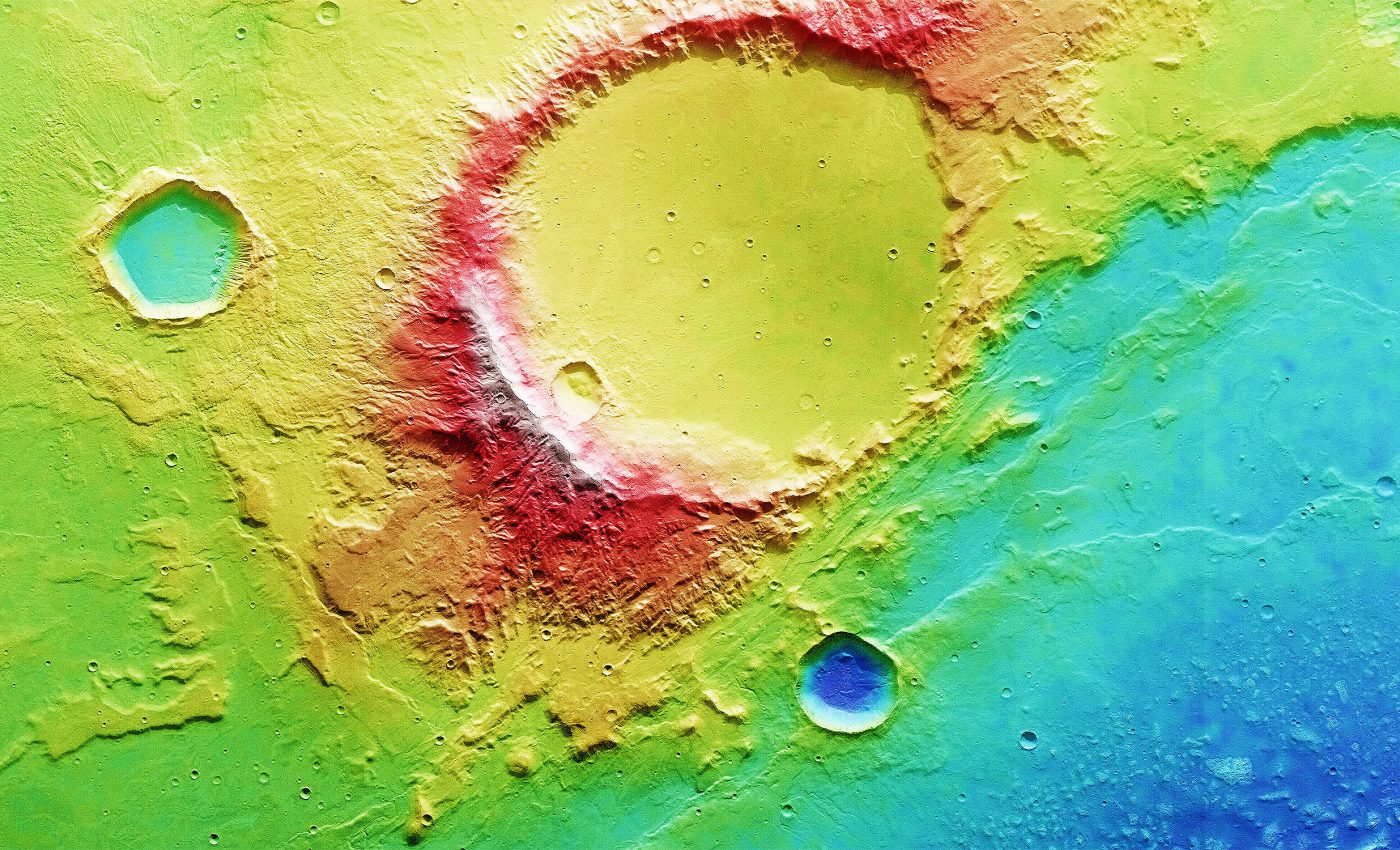
Mars' largest lake once contained an enormous amount of water
Humans can’t yet take a sightseeing trip to Mars, but what if there was a way to explore the Red Planet’s lakes and rivers from the comfort of your own home?
Prepare to be amazed by the insights shared by the European Space Agency’s Mars Express. The exquisite images it delivers are as close to a free ticket to Mars and its lakes as we might ever get.
Through their lens, we’re treated to gripping tales from the Martian surface, amplifying our understanding of the planet’s geology, atmosphere, and history.
Today, we set our sights on a region of Mars called Caralis Chaos, believed to have once been flooded with life-sustaining water.
Mars’ Lake Eridiani
Mars once hosted a lake larger than any known on Earth. If you could stack three Caspian Seas, you’d get an idea of Lake Eridania’s scale.
Boasting over a million square kilometers of coverage, Eridania was a veritable Martian mammoth, housing water amounts that dwarf any other lake on the planet.
The remains of this dried-up lake bed, unfortunately, bear little resemblance to the aquatic behemoth of old, evident in Caralis Chaos’s splintered terrain.
One look at the raised mounds scattered across the scene and you’ll spot evidence of an earlier, wetter era in Mars’s history.
Insights from Mars’ lakes
As you gaze at the images, you’ll spot two distinct cracks, like surrealist art etched onto Martian canvas.
These are the Sirenum Fossae, markers of seismic activity from a time when the Tharsis region’s rise led to considerable stress on the planet’s crust.
These fault lines are a testament to the volcanic activity that once shaped the Martian landscape, enhancing our understanding of Mars’s geological timeline.
The wrinkle ridges adorning this celestial canvas are another hallmark of Mars’s volcanic past. These tiny creases crisscrossing the panorama are fingerprints left by fresh lava sheets, squashed and contorted while they were still malleable.

Impact craters, the products of space rocks smashing into the Martian surface, are sprinkled throughout the scene. Each is a time capsule, shedding light on the conditions present at the time of formation.
The central crater in Caralis Chaos, for example, bears signs of water flow, hinting at a watery timeline that extends beyond the reign of Lake Eridania.
Enigma of Mar’s ancient lakes
Venturing deeper into the Martian landscape reveals the remnants of ancient river systems that once carved their paths through the rugged terrain of Caralis Chaos.
Scanning the surface, you can trace the winding lines where water may have once flowed, hinting at a time when Mars was a wetter, more hospitable environment.

These riverbeds, now dry, serve as vital clues to understanding the planet’s climatic history and the processes that shaped its topography.
The subtle nuances in the terrain, such as sediment deposits and meandering patterns, tell tales of erosion and sediment transport, nudging scientists closer to unraveling Mars’s enigmatic past.
Future explorations
As we continue to unveil the mysteries of Mars through advanced missions and cutting-edge technology, the excitement for potential future explorations grows tremendously.
Space agencies around the world are planning missions that may include robotic landers and, ultimately, human exploration.
With each new discovery, like those unearthed by the Mars Express, we’re piecing together the puzzle of our cosmic neighbor.
The study of Martian geology, coupled with the search for signs of past life, could transform our understanding of life’s potential beyond Earth.
With innovative tools and collaboration across nations, the next era of Martian exploration promises to be thrilling and illuminating, setting the stage for unprecedented scientific breakthroughs.
Mars Express and the Red Planet
Since 2003, the Mars Express mission has been circling Mars, illuminating its darkest secrets and brightest marvels.
Whether it’s cataloging minerals, scrutinizing the Martian atmosphere, or probing beneath its surface, the Mars Express is ceaselessly enriching our understanding of the Red Planet.
Years of relentless monitoring have uncovered the diverse Martian landscapes, from wind-carved ridges to colossal volcanic sinkholes to ancient lava pools.
Each image is a breadcrumb leading us towards a more comprehensive understanding of our planetary neighbor.
Are you intrigued by the Red Planet’s mysteries? We’ve only scratched the surface of what Mars Express has to offer, and each new discovery propels us further along the path towards unraveling the enigma that is Mars.
—–
The brilliant minds behind these dazzling visuals belong to the scientists at the German Aerospace Center, commonly called Deutsches Zentrum für Luft- und Raumfahrt (DLR).
The High Resolution Stereo Camera (HRSC) has been the mission’s eyes capturing snapshots of our neighboring planet for over two decades.
—–
Like what you read? Subscribe to our newsletter for engaging articles, exclusive content, and the latest updates.
Check us out on EarthSnap, a free app brought to you by Eric Ralls and Earth.com.
—–













